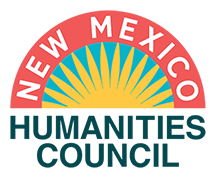History, Memory, and Public Space explores the perspectives around how we utilize public space to engage with fraught histories. In the first discussion, we integrate local and professional voices to help define the study of history – its purpose, significance, circulation, and regionalism. The creation of the atomic bomb in Los Alamos that continues to affect the entire world provides us a rich case study for helping understand the timeliness, relevance, and perspectives that shape the study of history.
Links to some references made in the conversation: The Emperor in August, The Emperor in August synopsis, and Peace Garden at the Nimitz Museum of the Pacific War.
SHARE:
This series is facilitated by Raffi Andonian who is a best-selling author of 3 books. He has previously worked guiding visitors at the Gettysburg battlefield, the Civil War sites around Richmond, the Martin Luther King birth home in Atlanta, and the history museum in Los Alamos NM. He has a master’s degree in history and another master’s degree in historic preservation.
Raffi will be joined by guests Christian E. Fearer and John Bartlit.
Christian E. Fearer is a senior historian for the Joint Chiefs of Staff. Prior to his current appointment, he served as a senior historian at U.S. Special Operations Command, deploying to Afghanistan on three occasions to serve on the headquarters staffs of elite special operations forces. He previously worked for the National Park Service at historic sites in Pennsylvania, Virginia, and Alaska. He is a distinguished graduate of the U.S. Naval War College in Newport, Rhode Island, and studied history at West Virginia University. He lives in Northern Virginia.
The thoughts, views, and opinions expressed by Mr. Fearer are entirely his own and do not represent those of the Department of Defense.
John Bartlit, PhD, had a distinguished 31-year career at Los Alamos National Laboratory (LANL) as a research chemical engineer. His professional work applied methods in his field: from process design and unit operations; to the control of integrated systems; and extending to safety concerns and economics. Dr. Bartlit has had a concurrent career as a volunteer since the formative years of the environmental movement, from which he writes a monthly newspaper column on broad aspects of the environment and the role of the public forum.
At LANL, Bartlit was a co-leader of a facility for developing and testing integrated systems for reprocessing tritium, a radioactive isotope of hydrogen. The project was jointly funded by the U.S. Department of Energy and by the Japan Atomic Energy Research Institute and staffed by scientists and engineers from LANL and from Japan.

